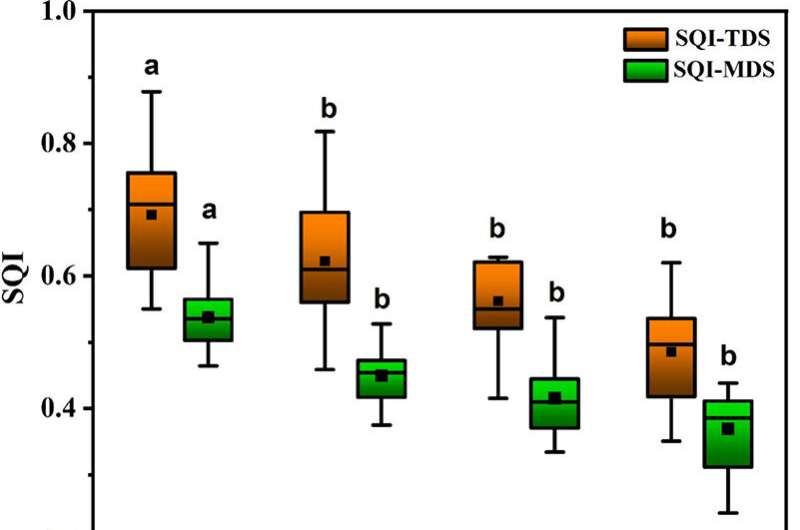Graphical abstract. Credit: Science of The Total Environment (2021). DOI: 10.1016/j.scitotenv.2021.145876
The fragile karst landscape of southwest China suffered serious degradation of vegetation and soil. During vegetation restoration, secondary vegetation succession altered soil functions and quality to various degrees.
The soil quality index (SQI), developed by integrating different soil properties, has proved to be an effective tool for soil quality assessment. However, uncertainties remain when evaluating soil quality under different stages of vegetation succession.
Researchers from the Institute of Subtropical Agriculture (ISA) of the Chinese Academy of Sciences evaluated soil quality under different vegetation succession by developing a soil quality index (SQI) using total data set (TDS) and minimum data set (MDS) methods.
The study was published in Science of The Total Environment on Feb.15.
Based on space-for-time substitutions method, the researchers collected soil samples from secondary forest, shrub, grass and cropland, respectively. Soil thickness was measured in situ, and all other soil physiochemical properties were determined in laboratory.
They found significant differences in soil indicators and thus in soil quality from secondary forest to cropland, which suggested that vegetation succession had significant influence on soil quality. Compared with other stages of vegetation succession, secondary forest had better capacity to improve soil quality.
Soil quality assessment results also indicated that MDS method with reduced soil indicators captured soil quality with similar accuracy to the more robust TDS method.
Soil thickness was selected in MDS, which suggested that it is a particular indicator for developing SQI in karst area.
In addition, results from generalized linear model (GLM) showed that vegetation type accounted for the largest proportion of SQI variation, followed by restoration time.
More information: Yaohua Zhang et al. Improvements in soil quality with vegetation succession in subtropical China karst, Science of The Total Environment (2021). DOI: 10.1016/j.scitotenv.2021.145876
Journal information: Science of the Total Environment
Provided by Chinese Academy of Sciences
























